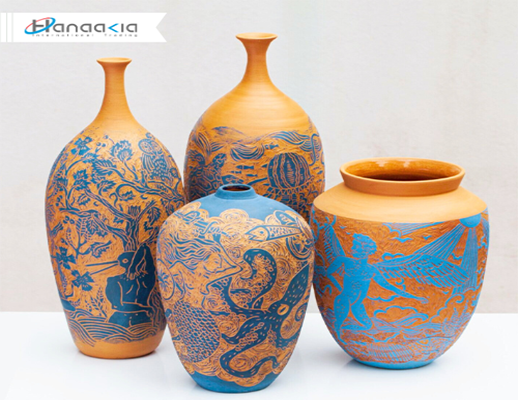
• Porosity (water absorption, etc.)
• Color after firing
• Thermal shock
• Moisture expansion
• Thermal expansion
• Mechanical resistance • Shrinkage (drying, firing, total shrinkage)
• Talc improves the brightness of super-white porcelain tiles.
• In glazes, when combined with calcined alumina, talc delivers satin finish with good fusibility and low thermal expansion, with reduced pinholes.
• Talc possesses several physical and mechanical properties which uniquely suit ceramics manufacturing
• Talc has high temperature resistance. Hence, it improves thermal shock resistance of ceramics and reduces fractures.
• Talc has low content of iron. Also, Talc has a high content of magnesium. As a result, it imparts great after burning whiteness to ceramics.
• Talc is chemically inert. This to say that it has extremely low reactivity with acids. Subsequently, it makes ceramics acid resistant.
• Pure Talc is hydrophobic in nature. Therefore, it helps to prevent water leakage and seepage in sanitary wares.
• The grinding process of Talc is highly customizable. Thus, it is possible to achieve the desired particle size best suitable for each type of ceramic product rather than one size fits all.



In the manufacture of ceramic goods required for the electrical industry, the talc should not contain more than 1.5% FeO and CaO. Some consumers do not regard CaO as having any harmful effect.
Steatite suitable for the manufacture of 'lava' insulators must he dense, compact, uniform and homogeneous in texture, free from any inclusion and parting planes. It should not contain CaO more than 1.5% and Fe2O3; more than 1%. The iron oxide is a colorant and gives the fired shapes an unattractive color. An increase of iron oxide above two per cent decreases the 'Q' value (ratio of reactance to resistance) and increases the dielectric constant. CaO imparts abrasiveness and usually a short vitrification range and sometimes a high firing shrinkage.



